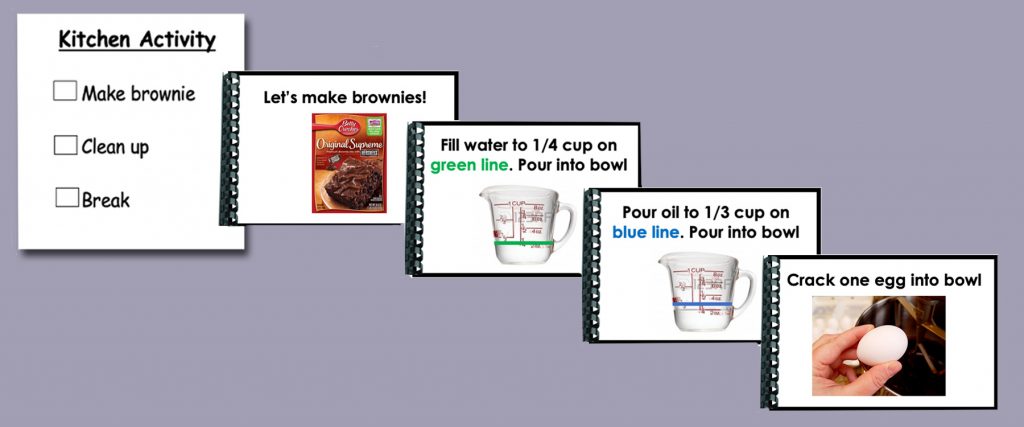TEACCH Tip#12 – Now We’re Cooking with Visuals
Now that many of us are spending more time indoors, cooking can be a fun activity to do together (that results in something tasty!). However, traditional recipe formats may be difficult for some individuals with autism to follow. Recipes have many steps, require exact measurements, and can include unfamiliar vocabulary. Using visual supports can help clarify important information, eliminate distractions, and provide a way to organize materials.
These visual supports may include:
- Use matching colors for measurements and measuring cups/spoons (e.g., the ¼ measuring cup is red- draw a red circle around any ¼ in the recipe)
- Organizing all the materials needed by gathering them before starting to cook and placing them on a cookie tray or place mat
- Rewriting the recipe in a checklist format: Break down big chunks of information into short phrases with check boxes to make the information easier to follow and provide a way for the individual to check off the steps they’ve completed.
- You can also put each step on its own note card, and flip through the cards to complete the steps if there is too much information on one page
- Creating a dictionary of all unfamiliar terms and what they mean. This can be as simple as providing the definition, or a picture of a word or making abstract terms more concrete. For example, “mix” = make a circle in the bowl 20 times.
- Put all ingredients for a recipe on a cookie sheet to the left of the oven

Helpful Hints:
- It is helpful to make it clear where items go when they are finished. Used utensils can go in the sink and ingredients can be placed back on to the cookie sheet. Visual supports can also be helpful for cleanup! Placing the word “finished” on the sink or “ingredients” on the cookie tray, may clarify where each item belongs.
- Cooking activities are also educational. They can be a helpful way to teach fractions or measurement skills.
- If numbers or fractions are difficult, color matching alone may be a way to indicate amounts. For example, these are too hard for the individual at this time, just use the color names or count out the number. For example, “2 scoops with the green spoon”
- Use short video clips or pictures to help increase understanding for individuals who aren’t yet reading. You can also practice imitation and turn-taking skills while you’re scooping, stirring, and eating!